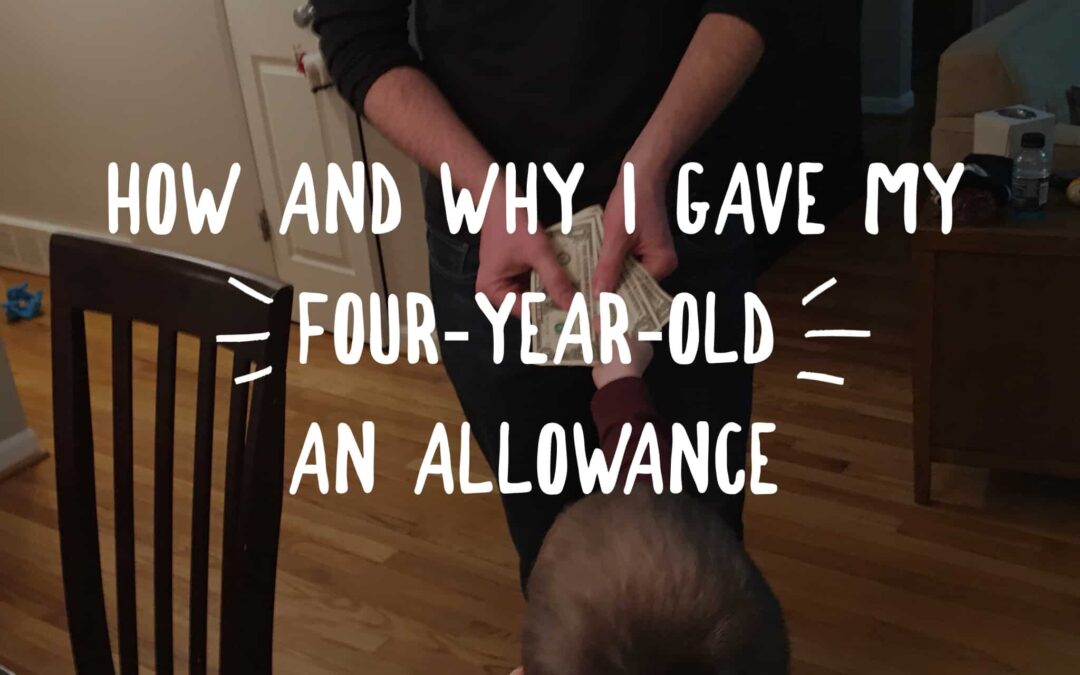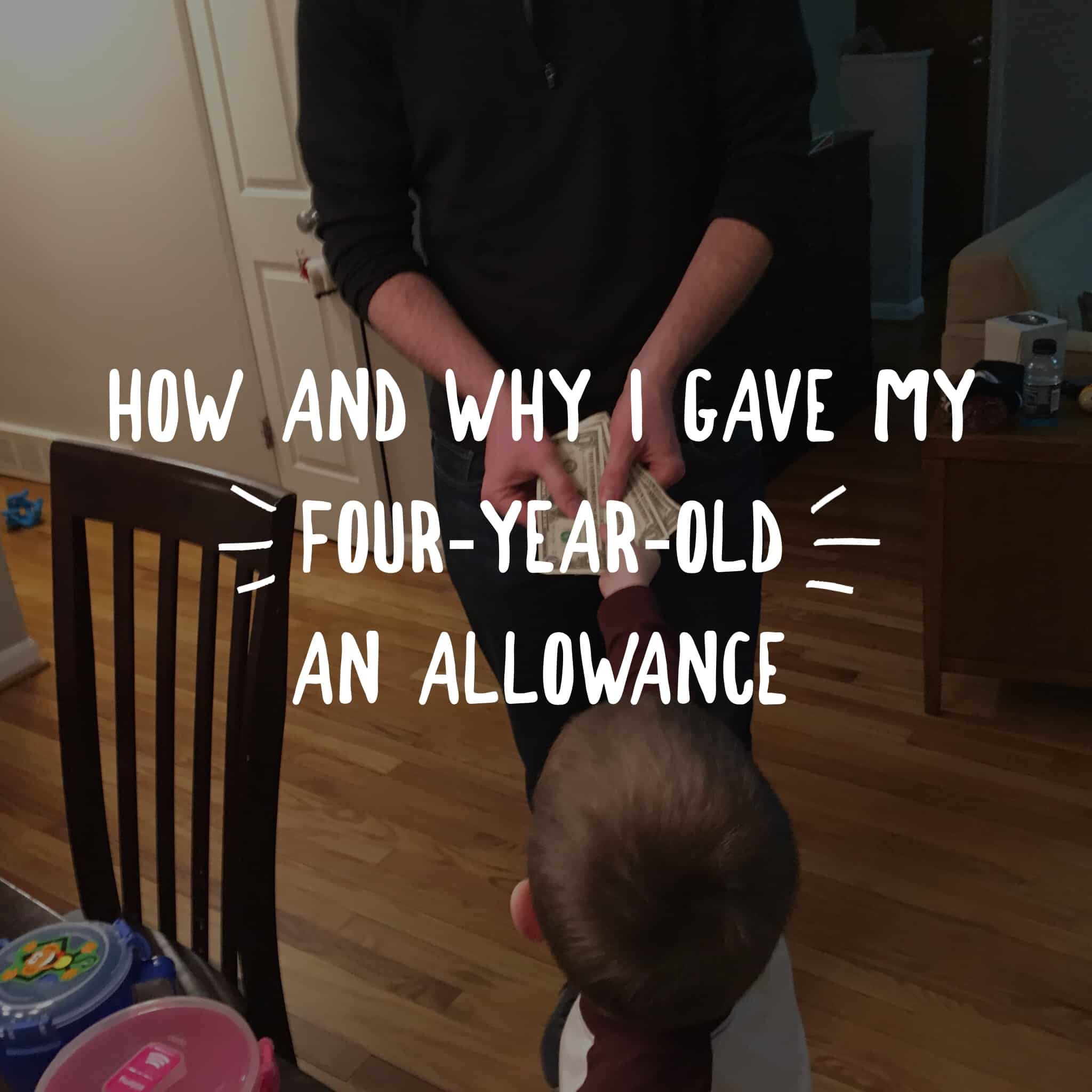Last month, I started giving my four-year-old son an allowance.
He can count and asks questions about money, so I felt that it was time. But when I share this new development with others, they seem surprised.
Some question the validity of the choice to give my son an allowance, asking questions like “Isn’t that too young?” and “How much are you giving him?”
Others are more curious about how they could start doing the same in their own families, saying out loud, “We need to give our kids an allowance.”
I proactively started talking about money with my son, Tommy, when he was three years old. These money conversations have led to some incredible sound bites, like this one:
My 4-year old son was just asked if he knew what Dad's job was. He replied:
"Dad helps people make good decisions with their money." pic.twitter.com/4tf1hEcx92
— Peter Lazaroff, CFA (@PeterLazaroff) November 11, 2017
I place a high value on having honest money conversations with him because I know this is a topic that won’t be properly addressed in elementary school, high school, or even college.
Paying an allowance is the first step towards instilling good money habits. It also creates natural opportunities for meaningful money-related conversations that aren’t just me lecturing him (and him tuning me out).
How Much Should You Pay Your Own Kids?
There is no “right” amount when it comes to determining how much to provide your kids for their allowances. There are, however, some rules of thumb you can test out for yourself.
A common starting point for a weekly allowance is $0.50 to $1.00 for each year of the child’s age, and that feels appropriate to us.
We opted to pay our son $4 a week with a $1 raise every year on his birthday. My wife and I explained that we will always pay for the things he needs, but that this was his money to use as he chooses.
Another common rule of thumb is that allowance should not be tied to chores. By linking allowance to chores, the lesson becomes more about work than money and there are plenty of other opportunities to foster a strong work ethic.
Chores are something that everyone does to contribute to the household. I’d like to avoid a situation where one day he decides forgoing a week of allowance is worth not unloading the dishwasher, taking out the trash, making his bed, etc.
We will gladly pay him some extra cash, however, if he takes initiative to do a project that isn’t expected of him such as raking the leaves or cleaning out the garage.
Where Does the Money Go?
Before we doled out any cash, we had Tommy pick out three containers to store his money. (To make it more fun, we let him decorate the containers with paint, markers, and stickers.)

We explained that one container was for money to spend, one for money to share with others that have less than us, and one to save up for something special.
The Spend container is for impulse buys and gets $1 a week. For example, Tommy might spend a few quarters on small (and relatively useless) item from the toy machines at his indoor soccer facility.
Prior to him having an allowance, he asked for lots of little stuff like this, but now when he asks, I can explain the toy is a want and not a need. (The tricky part, of course, is clearly and consistently defining/classifying needs and wants.) Then he can make his own choice about the purchase.
The Share container is for giving to others and gets $1 a week. Once Tommy saves $10, he wants to share those funds with kids that don’t have enough money for toys.
Our plan is to call a relevant organization to arrange for Tommy to hand over a cash gift to the Development Director in person. From there, he’ll get on their mailing list and receive information about the organization that his gift supports.
The Save container is for a long-term savings goal and gets $2 a week. Tommy wants to save for “a big Lego set.” Knowing that would take a few months – an eternity to a child his age – we printed a picture of the savings goal to put into the container with his money.
The three-container system serves as his first budget. When he gets a $1 raise on his birthday, we’ll explain the importance of allocating some portion of the raise to the Save container, but we’ll try to let him decide how much.
What About Gifts of Money?
Our son isn’t aware of any of the monetary gifts he’s received for birthdays or holidays yet. So far, we’ve directly deposited every check he’s received into his brokerage account and immediately invested the money in a highly diversified, low-cost mutual fund.
At some point, we know Tommy will be aware that his grandparents or great grandma occasionally gives him some serious dough relative to his allowance. My hope is that the current habit he’s building of allocating his allowance between the Spend, Share, and Save containers will develop a natural tendency towards saving a portion these gifts.
When he does eventually ask about his cash gifts, my wife and I can explain how we use the money we receive as gifts. Assuming we’ve had regular conversations revolving around his different Spend, Share, and Save funds, then I trust he will make a good decision.
Stay tuned and I’ll let you know how this goes.
What’s Next?
I plan to expand on this topic as I continue my research and live through the experience myself with both Tommy and Joey, my eight-month-old son.
Financial literacy is embarrassingly low and a lot of that is because we never get formal personal finance training in school. It’s up to parents to instill good money habits in their kids.
Unfortunately, not many experts spend time talking about this topic. In the future, I intend to highlight the success stories and the mistakes I make in teaching my children about money.
Hopefully, this will help you enhance your own ability to teach your kids about money.
















Like this a lot.
Don’t tell my kids. My 13 year old gets $3 a week! Great blog post.